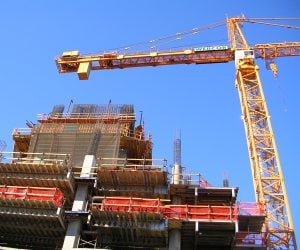“Right now, I think the market’s very good,” says Dekanich, who specializes in bridge and road work construction projects. “A number of big players are active in it. I think they do a really good job. The rates are fairly reasonable for us. It’s not really hard to find at this point, because I think their loss experience has been reasonable and not poor.”
A
Marsh Insurance Market Report 2013 says infrastructure builds slowed dramatically in 2012. Nevertheless, Canada’s recent spring budget included funding for a number of large-scale infrastructure works to be undertaken in 2013.
Residential housing construction is slowing down in Ontario and Quebec, but is still booming in Newfoundland, northern Alberta, Saskatchewan and Manitoba. The mid-sized construction insurance market is “highly competitive,” Marsh says.
Finding insurance to cover damage to the environment arising from construction projects has provided a new wrinkle.
.jpg)
“I think sometimes on the environmental side, certainly for bridge construction, it’s tougher,” said Dekanich. “I think you have to do a lot more homework in order to talk an insurer into taking [on an environmental risk of] that size.”
In addition to accounting for the various project sizes, insurer risk appetites, clients’ risk mitigation plans, brokers have a myriad of coverage options from which to choose.
Construction insurance is not “one size fits all,” as Peter A.K. Vetsch writes for Mondaq. “Being able to distinguish the coverage provided by the different types of construction-related policies will allow a party to build a framework of insurance for a particular project that is specifically suited to its needs.”
Construction insurance policies come in the following five forms:
-
Commercial General Liability (CGL) policies protect a third party from any damage caused to their property over the course of the construction. (They do not cover the project under construction.)
-
Property insurance coverage covers the project under construction. It is triggered by physical loss or damage to the insured's own property resulting from an insured peril.
-
A builders' risk policy, also known as a “course of construction” policy, usually covers all property on a project during the course of construction. It expires when construction is completed and the project is first used or occupied. It is usually purchased to cover off exposure due to a “your work” exclusion found in the CGL policies. The policy generally covers all property on a project in the course of construction, installation or repair, as well as temporary property located on-site such as scaffolding or forms.
-
Professional liability insurance is usually specialized and tailored to a particular construction profession. It protects against liability arising from an error, act or omission in the insured's performance of professional services that leads to a loss.
-
Wrap-up insurance is a single, project-specific policy that provides coverage for the owner, contractor and all subcontractors on a project. It is an alternative to each party on a project obtaining their own separate liability insurance policies, or having the contractor add the owner and consultants as additional insureds to its CGL policy.
Rates are stable – anywhere between a 5% increase and a 5% decrease – for all of the above types of insurance, Marsh reports. It adds that wrap-up insurance has become increasingly popular in 2012.



.jpg) “I think sometimes on the environmental side, certainly for bridge construction, it’s tougher,” said Dekanich. “I think you have to do a lot more homework in order to talk an insurer into taking [on an environmental risk of] that size.”
“I think sometimes on the environmental side, certainly for bridge construction, it’s tougher,” said Dekanich. “I think you have to do a lot more homework in order to talk an insurer into taking [on an environmental risk of] that size.”